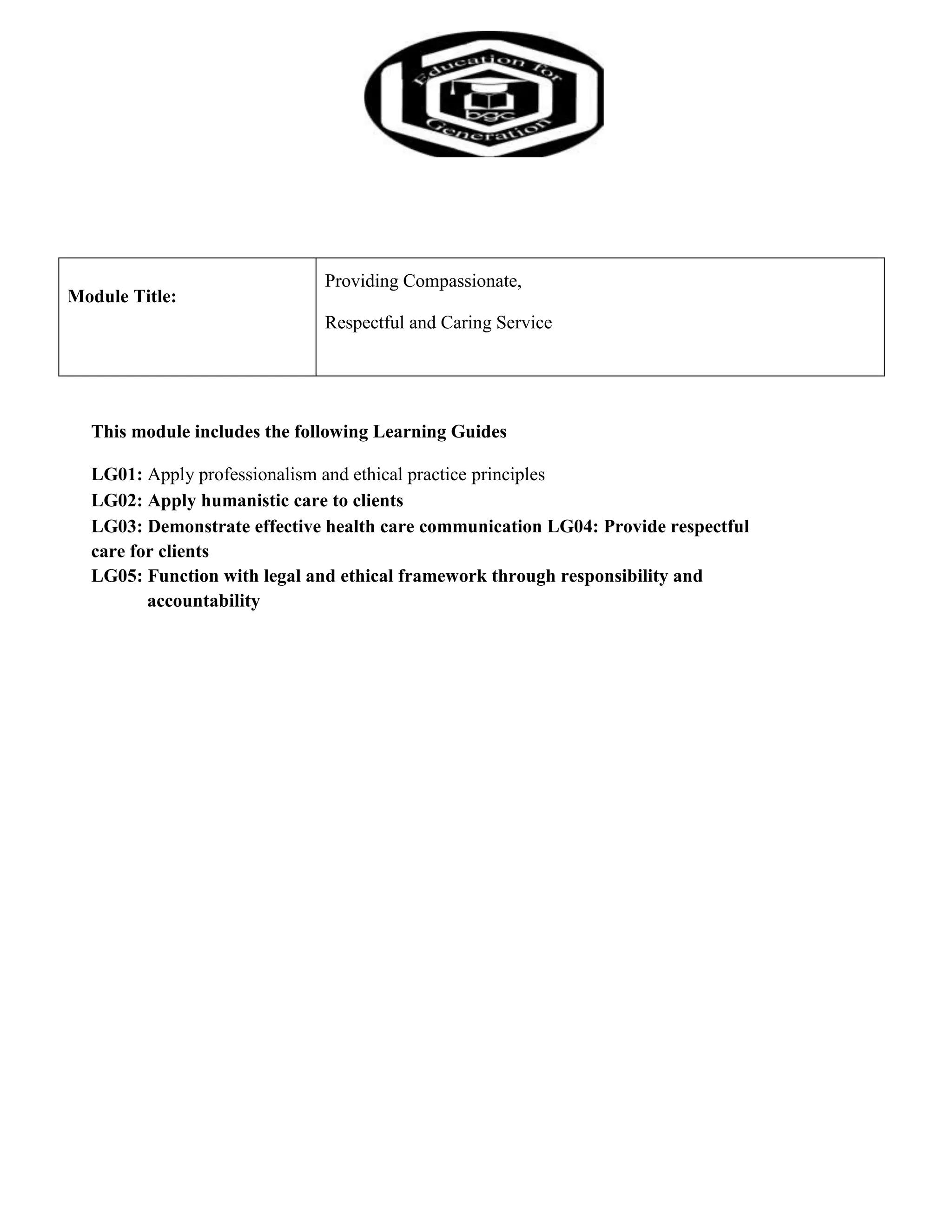This document provides an overview of a learning module that includes 5 learning guides focused on providing compassionate, respectful, and caring health services. The first learning guide discusses applying professionalism and ethics, including identifying ethical principles, professional codes of conduct, and professional values. The second learning guide focuses on demonstrating effective health care communication. The remaining guides discuss applying humanistic care to clients, providing respectful care for clients, and functioning within a legal and ethical framework with responsibility and accountability.













































































